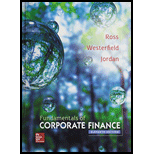
Case synopsis:
Company S is a real estate firm, whose CEO (chief executive officer) is Person R. The firm buys a real estate and rents it to the tenants. The firm gains profit every year. Before the foundation of Company S, Person R was the CEO and the founder of Company A, which is a farming operation. Company A was a failure firm, which ends up with bankruptcy. This situation made Person R to be extremely averse towards debt financing.
Hence, the company is completely financed through equity. Company S is assessing a plan to buy a huge tract of land, which would be leased to the tenant farmers. This purchase is predicted to raise the annual earnings before tax in perpetuity. Person J is the new CFO (chief financial officer) of Company S, who has found the present capital cost of the company.
Person J felt that the company will be very valuable if it adds debt in its capital structure. While evaluating whether the company could issue debt to completely finance the project, she found that it can issue bonds at a par value with the coupon rate. She also found an optimal range of capital structure between 70% equity and 30% debt to maximize its value.
Characters in the case:
- Company S
- Company A
- Person S
- Person J
Adequate information:
- If Company S moves beyond the 30% debt, the bonds issued by the company will have a lower rating, a greater coupon as it is the possibility of financial distress, and the associated cost would increase.
- Company S also has a corporate rate of tax.
To discuss: Whether Person X will suggest equity or debt to finance the purchase of land, if Person S wants to expand the market value of the company.
Want to see the full answer?
Check out a sample textbook solution
Chapter 16 Solutions
Fundamentals of Corporate Finance with Connect Access Card
- The market where new securities are issued and sold to investors is called: A. Secondary marketB. Money marketC. Primary marketD. Over-the-counter marketarrow_forwardA bond is trading at a premium when: A. Its coupon rate is equal to the yield to maturityB. Its market price is higher than its face valueC. Its market price is lower than its face valueD. It is issued by a well-rated companyarrow_forwardNeed help ! In financial terms, liquidity refers to: A. Profitability of an investmentB. Ability to meet short-term obligationsC. Long-term solvencyD. Market value of equity need answerarrow_forward
- In financial terms, liquidity refers to: A. Profitability of an investmentB. Ability to meet short-term obligationsC. Long-term solvencyD. Market value of equityarrow_forwardNeed help! Which type of risk cannot be eliminated through diversification? A. Market riskB. Credit riskC. Operational riskD. Unsystematic riskarrow_forwardWhich type of risk cannot be eliminated through diversification? A. Market riskB. Credit riskC. Operational riskD. Unsystematic riskarrow_forward
- The term "leverage" in finance refers to: A. Use of debt to increase potential returnsB. Investing in high-risk securitiesC. Paying off liabilitiesD. Issuing new shares need step by step.arrow_forwardDon't use chatgpt, i need help! The term "leverage" in finance refers to: A. Use of debt to increase potential returnsB. Investing in high-risk securitiesC. Paying off liabilitiesD. Issuing new sharesarrow_forwardI need help in this question! The term "leverage" in finance refers to: A. Use of debt to increase potential returnsB. Investing in high-risk securitiesC. Paying off liabilitiesD. Issuing new sharesarrow_forward
- Need help! The term "leverage" in finance refers to: A. Use of debt to increase potential returnsB. Investing in high-risk securitiesC. Paying off liabilitiesD. Issuing new sharesarrow_forwardThe term "leverage" in finance refers to: A. Use of debt to increase potential returnsB. Investing in high-risk securitiesC. Paying off liabilitiesD. Issuing new sharesarrow_forwardDon't use chatgpt! What is the formula of net persent values ? explain.arrow_forward
 Financial Accounting: The Impact on Decision Make...AccountingISBN:9781305654174Author:Gary A. Porter, Curtis L. NortonPublisher:Cengage Learning
Financial Accounting: The Impact on Decision Make...AccountingISBN:9781305654174Author:Gary A. Porter, Curtis L. NortonPublisher:Cengage Learning Intermediate Financial Management (MindTap Course...FinanceISBN:9781337395083Author:Eugene F. Brigham, Phillip R. DavesPublisher:Cengage Learning
Intermediate Financial Management (MindTap Course...FinanceISBN:9781337395083Author:Eugene F. Brigham, Phillip R. DavesPublisher:Cengage Learning





